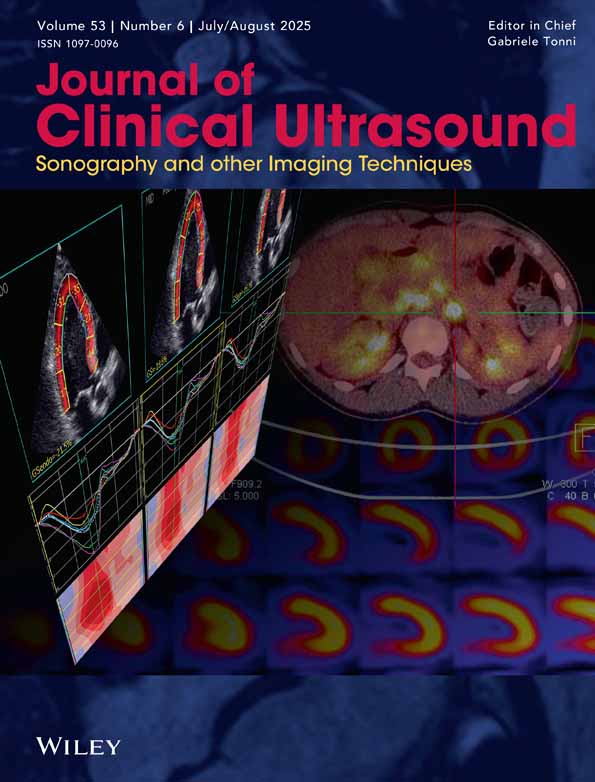Cardiothoracic ratio in the first half of pregnancy
Abstract
Purpose
The present study was conducted to establish the nomogram of fetal cardiothoracic (C/T) ratio in the first half of normal pregnancies (eg, 11–20 weeks of gestation), using conventional sonographic techniques.
Methods
Two hundred thirty-eight normal pregnant women enrolled in our prenatal care were recruited into this study. All the patients had singleton fetuses whose gestational age could be accurately determined by the patient's last menstrual period and sonographic measurements. All the newborns were proven to be normal at birth. The sonographic measurements used to calculate the C/T ratio were obtained from axial scans at the level of the four-chamber view. All measurements were made by the same examiner using a single high-resolution machine.
Results
A total of 238 C/T ratio measurements were made. The mean C/T ratio values increased slightly with gestational age, rising from 0.38 at 11 weeks to 0.45 at 20 weeks. The mean C/T value at each gestational week was never greater than 0.50, and no fetus had a C/T ratio greater than 0.50 at 11–15 weeks of gestation. The means and 5th, 50th, and 95th percentiles of the C/T ratio were calculated for each week of gestation and the nomogram was established.
Conclusions
Calculation of the C/T ratio is a simple, reliable, reproducible, and time-efficient means of assessing the size of the fetal heart. By comparing the C/T ratio with the normal values presented here, physicians should be able to more easily identify cases of cardiomegaly early in their patients' pregnancies. © 2004 Wiley Periodicals, Inc. J Clin Ultrasound 32:186–189, 2004; Published online in Wiley InterScience (www.interscience.wiley.com). DOI: 10.1002/jcu.20014




